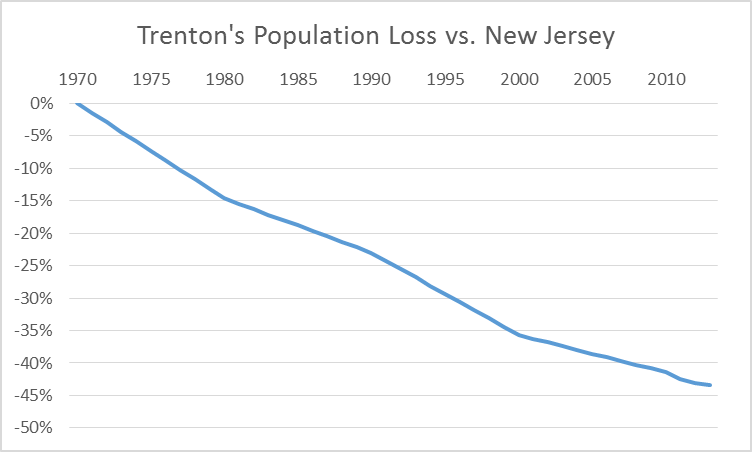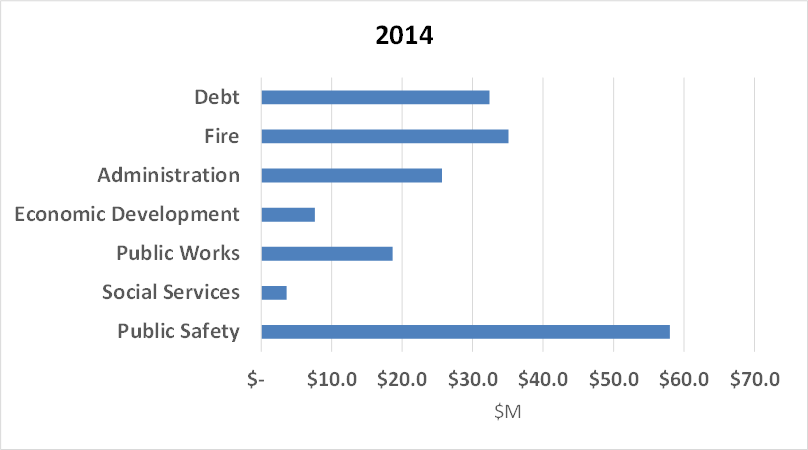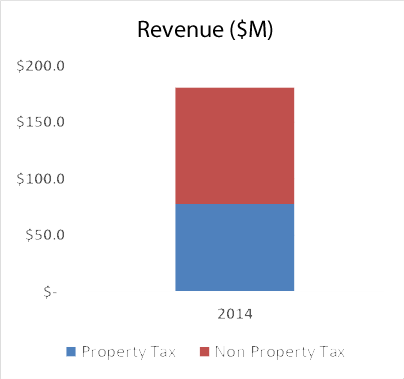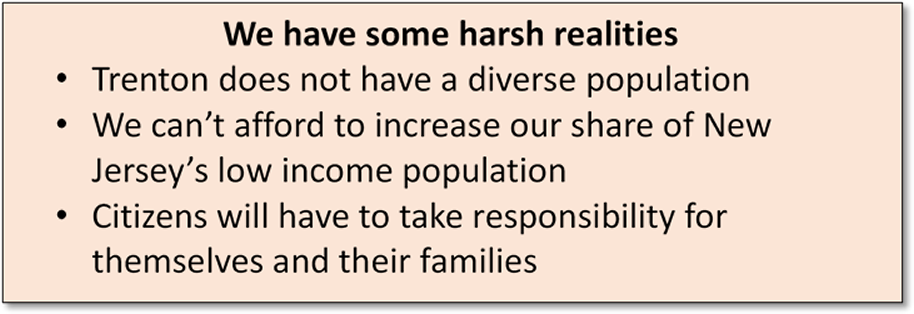Posts Tagged ‘median household income’
Trenton’s 2015 Report Card
Mayor Jackson has been in office for a full year and the results for Trenton over that time period are promising. Yes, that’s right, I said promising.
The Mayor has been helped by a generally improving economy and a corresponding drop in crime. That said, just like we blamed Mayor Mack for the city’s decline we have to give Mayor Jackson credit for the positive shift in most of our numbers
There are five key indicators of Trenton’s health on which thoughtful people have agreed over the years. Five measurable and mostly 3rd party numbers, that show how well we’re doing. And if all five of these indicators started showing signs of improvement, all Trentonians would notice the city coming back to life. If we could see progress in these five areas we’d have hope again that would be contagious.
The indicators are all well-known statistics that are easily and regularly measured in Trenton. They are:
- Crime levels as measured by the Uniform Crime Report
- Latest data is for 2014 and include 6 months of the administrations term
- Population growth as measured by the U.S. Census Bureau (in the case of Trenton, every year)
- Latest estimate is for 2013 and therefore predates the current administration
- Graduation rate as measured by the NJ Department of Education
- Latest data is for the 2014 academic year and predates the current administration
- Median Household Income as measured by the U.S. Census, and
- Latest estimate is for 2013 and therefore predates the current administration
- Economic success as measured by our Tax Base
- Data is up to date as of mid-year 2015
The following is the 2015 Report Card:
Our economy is gaining wealth!
In 2011 Trenton’s tax base, the value of property on which we can charge a property tax, was $2,009,731,470. By 2014 it has declined to $1,993,783,800. In the last year our tax base has rebounded to $ 2,036,287,800 for 2015. This ~$40,000,000 in new or revalued ratables is a healthy 2% increase in one year.
The implications of this increase are large. At a 4.8% tax rate, that increase in ratables translates into an extra $2M for our city budget or roughly 1% of the total.
We can never have a lower tax rate or afford to spend more money on parks, police and streets unless our ratables keep going up.
Because the direction changed I give Trenton a “B” for its much needed increase in ratables. A $100M increase (the rate needed for our economy to reach escape velocity) would garner an “A”.
Our crime rate came down!
The 2014 Uniform Crime Report represents 6 months of Mayor Jackson’s tenure and the leadership of a new Police Director. It’s fair to assume that that change has helped stimulate the 14% decrease in crimes from 2013.
Uniform Crime Reports for 2014 are 2960
- This is a decrease from 2013 of 14% which shows we’re moving in the right direction,
- This is in addition to a 14% decrease from 2012 to 2013.
- Our murder rate was also down a bit from 37 to 32 last year.
There is a direct correlation between population decline and crime
In “CRIME, URBAN FLIGHT, AND THE CONSEQUENCES FOR CITIES”, economists Julie Berry Cullen and Steven D. Levitt found that each FBI index crime leads directly to one person moving out of an inner city, like Trenton. That’s bad enough but high income residents are 5 times more likely to leave due to crime than average. Families with children are 3 times more likely to leave. Finally crime rate is negatively correlated with depopulation, home values and per capita income.
If our crime rate can continue to decline and other positive stimulants are put into play, there may be hope for us yet.
Crime reduction is the 2nd bright spot in this report card and deserves an “A”.
Our people are still leaving the city
Trenton’s 2013 census estimate is 84,349 residents. This is a slight decline of from 2012’s estimate of 84,447.
- Since 2010 our population has declined by 0.7%
- Meanwhile New Jersey’s population has grown 1.4% in the same period
Relative to our neighbors, Trenton has become a less desirable place to live.
Give ourselves a C. The exodus has slowed.
It will take an influx of new residents to begin the process of rebuilding our tax base. We have room to grow. At its peak in the 1920s, Trenton housed 140,000 residents.
Our incomes are still relatively low
Trenton’s Median Household Income is $36,662 (2013). This is slightly lower than the 2012 estimate of $36,727
- This is in stark contrast to NJ’s 2013 median household income of $71,629, which is almost double that of Trenton’s.
- Hamilton’s median household income is $71,724 for 2013.
Income levels are very important to the health of a city as they determine how much money residents will spend, which in turn, determine the attractiveness of a city to retailers and other amenities. While NJ’s median household income is double that of Trenton’s, NJ’s per capita retail spending is three times our rate. This means that retail spending falls off disproportionately to income.
Making Trenton attractive to retail and entertainment business is important as the presence of those amenities makes the city attractive to new residents and businesses but we won’t get new amenities without more spending power in the city. As it stands, Trenton is a relative “non-entity” when it comes to retail spending.
Because we’re grading on a curve and Camden and Passaic are even worse off than we are, Trenton gets a “D”.
Our children are still dropping out of school
The Trenton school district’s 2014 graduation rate was 52.9%.
- This is an improvement over 2013’s dismal graduation rate of 48.6%
- This means that almost half of the students who entered 9th grade in 2009 graduated in 2013.
- There is no world in which this is healthy.
- It can be argued that fixing the schools isn’t a prerequisite for revitalizing the city. The easiest target market for new residents is the millions of people without kids. However, failing schools don’t help.
With 50% of our young adult population grossly under-educated, they are likely to become a drain on the economic future of our city. High school dropouts are more likely than graduates to turn to crime and create a social cost for the rest of us.
There’s no other grade for a city that graduates barely over 50% of its students than “F”.
This is a complicated problem
A city is a complex system. When dollars are invested in crime fighting in one part of the city, street paving may go undone in another. That lack of street paving may have a larger or smaller impact on investment in the city than the crime fighting.
Investment will lead to a higher tax base but not for some time. In the meantime, there may not be enough money to fund basic services and taxes have to be raised.
Higher taxes will devalue the investment, leading to lower than anticipated increases in the tax base.
And so it goes in any economy. 1st and 2nd order causes and effects are at play making seemingly simple policy decisions difficult. This is especially problematic in an environment where the public doesn’t appreciate the non-intuitive nature of such decision-making.
Is the city turning around?
We’ve been in a vicious cycle
- High crime led to depopulation and greater expense in policing
- Depopulation led to higher taxes which drives people away faster
- In a city where almost half of its budget is fixed on debt services and benefit obligations, our inability to fund discretionary budget items such as city services is limited
- Lack of services drives people away even faster thus creating a vicious cycle.
The data shows some promise!
A bump in our tax base, a decrease in crime and a slight increase graduation are all great. It’s been a long time since 3 of these five important indicators have actually improved.
There is also some promise in the Jackson administration.
The Jackson administration has recently released a strategic plan of sorts that highlights some areas of focus. I’ve not seen details but mostly like what I do see ( 5 things Trenton is focusing on to foster economic development).
The plan includes focus on
- Density, with good words about market rate housing and transparency for developers and some good stories about some upcoming “big” developments.
- Diversity, but what they are really talking about are small business loans for the Hispanic community,
- Quality of Life, what they’re talking about is Homesteading and getting rid of vacant properties, which is great.
- Retail, I don’t know what this focus might turn in to practically but they’re talking S. Broad St., which is great.
- Industry, is the puzzling piece. It flies in the face of reason that light industrial development makes real sense (without big subsidies) in Trenton.
All in all this is a decent report card. My prescription for Trenton after the 2014 election was to get basic government operation in order and make the 2nd year the one were big policy initiatives were unveiled. We started out rocky by operating without a budget for 9 of 12 months. Hopefully that won’t happen again and we see some meat on the bones of the above focus areas.
The 2014 Report Card: We all know Trenton is in Rough Shape
We all know Trenton is in Rough Shape
Now that Mayor Jackson has taken office it’s squarely on his shoulders to not just talk but to show results in improving Trenton.
We all express our displeasure differently. Residents, business owners and those considering a move to Trenton say it in many different ways:
- “Things have gotten bad”
- “Restaurants are moving away”
- “Trenton used to be great”
- “My taxes are killing me”
- “It’s not safe anymore”
We all have emotional responses to the situation we’re in and it’s difficult to put our finger on what bothers us most.
If we really think about it though there are five key indicators of Trenton’s health. Five symptoms that show how well we’re doing. And if all five of these indicators started showing signs of improvement, all Trentonians would notice the city coming back to life. If we could see progress in these five areas we’d have hope again that would be contagious.
The indicators are all well-known statistics that are easily and regularly measured in Trenton. They are:
- Crime levels as measured by the FBI’s Crime Index
- Population growth as measured by the U.S. Census Bureau (in the case of Trenton, every year)
- Graduation rate as measured by the NJ Department of Education
- Median Household Income as measured by the U.S. Census, and
- Economic success as measured by our tax base
To be a successful Mayor, Eric Jackson must lead Trenton to show progress on these 5 measures. It’s not nearly enough to say “I’m working hard”. Mayors have said that before and the problem was they were working on the wrong things. Doing the smart thing is much more important than working hard on the wrong thing. Over the next several years I plan to do my part by reporting to Trentonians on Mr. Jackson’s progress on these basic measures. I’m looking for results not promises of results.
The following is my initial report.
Our people are leaving the city
Trenton’s 2012 census estimate is 84,447 residents
The most important measure is the simplest one, is Trenton such an attractive place to live that our population is growing. Unfortunately the current answer is NO.
- Since 2000 our population has declined by 1.2%
- Meanwhile New Jersey’s population has grown 5.4% in the same period
Relative to our neighbors, Trenton has become a less desirable place to live. Over the past 44 years Trenton has steadily under-performed with the State growing 43% faster than Trenton.

While New Jersey’s growth has accelerated Trenton’s population has shrunk. We benefit from the same factors that drive growth in the state so it is especially disappointing that Trenton continues to lose people. Some have pointed out that Trenton’s population loss has slowed, but that is blatantly misleading. It has only slowed because New Jersey’s growth has accelerated.
It will take an influx of new residents to begin the process of rebuilding our tax base. We have room to grow. At its peak in the 1920s, Trenton housed 140,000 residents.
Our economy is losing wealth
In 2011 Trenton’s tax base, the value of property on which we can charge a property tax, was $2,009,731,470. By 2014 it has declined to $1,993,783,800. This represents a .8% loss in ratables for the city.
The implications of this statistic are large. It means our economy is getting worse instead of better and most importantly, it means that our policies are not working.
We can never have a lower tax rate or afford to spend more money on parks, police and streets unless our ratables go up.
Our incomes are relatively low
Trenton’s Median Household Income is $36,727 (2012)
- This is in stark contrast to NJ’s median household income of $71,637, which is almost double that of Trenton’s.
- Hamilton’s median household income is $72,735
Worse yet, the percentage of households in Trenton with income over $200,000 is 1.6%,
- The compares poorly to 9.1% for New Jersey and 4.3% for Hamilton
- High income households spend money on amenities at a much higher rate than low income
Income levels are very important to the health of a city as they determine how much money residents will spend, which in turn, determine the attractiveness of a city to retailers and other amenities. While NJ’s median household income is double that of Trenton’s, NJ’s per capita retail spending is three times our rate. This means that retail spending falls off disproportionately to income.
Making Trenton attractive to retail and entertainment business is important as the presence of those amenities makes the city attractive to new residents and businesses but we won’t get new amenities without more spending power in the city.
Our children are dropping out of school
The Trenton school district’s 2013 graduation rate was 48.6%.
- This means that almost half of the students who entered 9th grade in 2009 graduated in 2013.
- There is no world in which this is healthy.
- It can be argued that fixing the schools isn’t a prerequisite for revitalizing the city. The easiest target market for new residents is the millions of people without kids. However, failing schools don’t help.
With 50% of our young adult population grossly under-educated, they are likely to become a drain on the economic future of our city. High school dropouts are more likely than graduates to turn to crime and create a social cost for the rest of us.
The cumulative effect of moving the graduation rate up to 75% could halve our crime problem in the long run if the correlations between dropout rate and crime follows.
Our crime rate is still high
Trenton’s crime problems have tracked the national trend downwards over the last decade.
Uniform Crime Reports for 2013 are 3443
- This is a decrease from 2012 of 14% which shows we’re moving in the right direction,
- However in 2013, Trenton set a murder record of 37 which placed it among the most dangerous cities in America.
- Meanwhile neighboring Hamilton had a crime index 2057 and only 1 murder in 2013.
There is a direct correlation between population decline and crime
In “CRIME, URBAN FLIGHT, AND THE CONSEQUENCES FOR CITIES”, economists Julie Berry Cullen and Steven D. Levitt found that each FBI index crime leads directly to one person moving out of an inner city, like Trenton. That’s bad enough but high income residents are 5 times more likely to leave due to crime than average. Families with children are 3 times more likely to leave. Finally crime rate is negatively correlated with depopulation, home values and per capita income.
These conclusions alone are quite damning for Trenton. However, it gets worse. If a city becomes depopulated, the crime rate goes up because the criminals stay behind. Also, because high income people leave, poverty becomes more concentrated.
We don’t have a lot of flexibility in our budget to fix things
Our expenses can’t change much
Debt, fire and police make up almost all of the budget and other functions are cut to the bone.

Our revenues can’t change much either
Property tax makes up less than half of our budget so any change in the budget will have a large effect on taxes.

This is a complicated problem
A city is a complex system. When dollars are invested in crime fighting in one part of the city, street paving may go undone in another. That lack of street paving may have a larger or smaller impact on investment in the city than the crime fighting.
Investment will lead to a higher tax base but not for some time. In the meantime, there may not be enough money to fund basic services and taxes have to be raised.
Higher taxes will devalue the investment, leading to lower than anticipated increases in the tax base.
And so it goes in any economy. 1st and 2nd order causes and effects are at play making seemingly simple policy decisions difficult. This is especially problematic in an environment where the public doesn’t appreciate the non-intuitive nature of such decision-making.
How can we turn this city around?
We’re in a vicious cycle
- High crime leads to depopulation and greater expense in policing
- Depopulation leads to higher taxes which drives people away faster
- In a city where almost half of its budget is fixed on debt services and benefit obligations, our ability to fund discretionary budget items such as city services is limited
- Lack of services drives people away even faster thus creating a vicious cycle.
How can we turn a vicious cycle into a virtuous circle?
- A virtuous circle is the opposite of a vicious cycle
- Good things build on one another
- Eventually enough good things happen that they overwhelm the bad things and the city grows despite itself
- This is happening in some cities in America like New York and Washington and even New Brunswick and Jersey City
